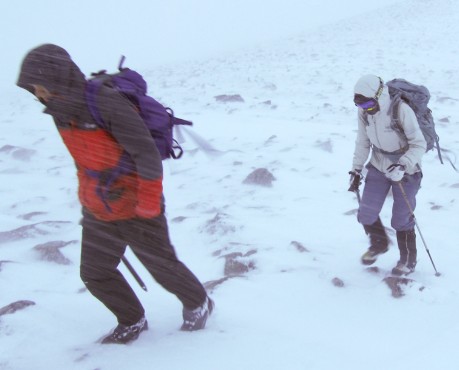
Mountaineering is a step up in seriousness from hill walking, and it's important that your clothing and equipment keep pace with that change.
You will already have clothes and kit that you've used for three seasons of the year, but the demands of winter require a step change in the way you dress and in the equipment you carry. The obvious additions are ice axe and crampons, to deal with a range of snow conditions, but you also need to consider the boots you wear and many other factors.
Weather can range from wet and windy to sub-zero and windy (and now and then the odd wonderfully clear and calm day with blue skies and crispy, firm snow!) and your clothes and equipment have to be capable of coping with both extremes and everything in between.
What to wear:
What to carry:
In addition you may consider a snow shovel and a helmet.
And don’t forget, it is no use having all the kit if you have no idea how to use it! If you are planning on venturing into the winter hills for the first time why not treat yourself to one of our winter skills courses?
Ever wondered why a winter rucksack looks bigger than the one you take in summer?
Check out this advice from Glenmore Lodge on what to wear and what to take with you for a day out in winter conditions.
Further advice on winter kit, which will help when finding out what is necessary and/or best for your particular needs.